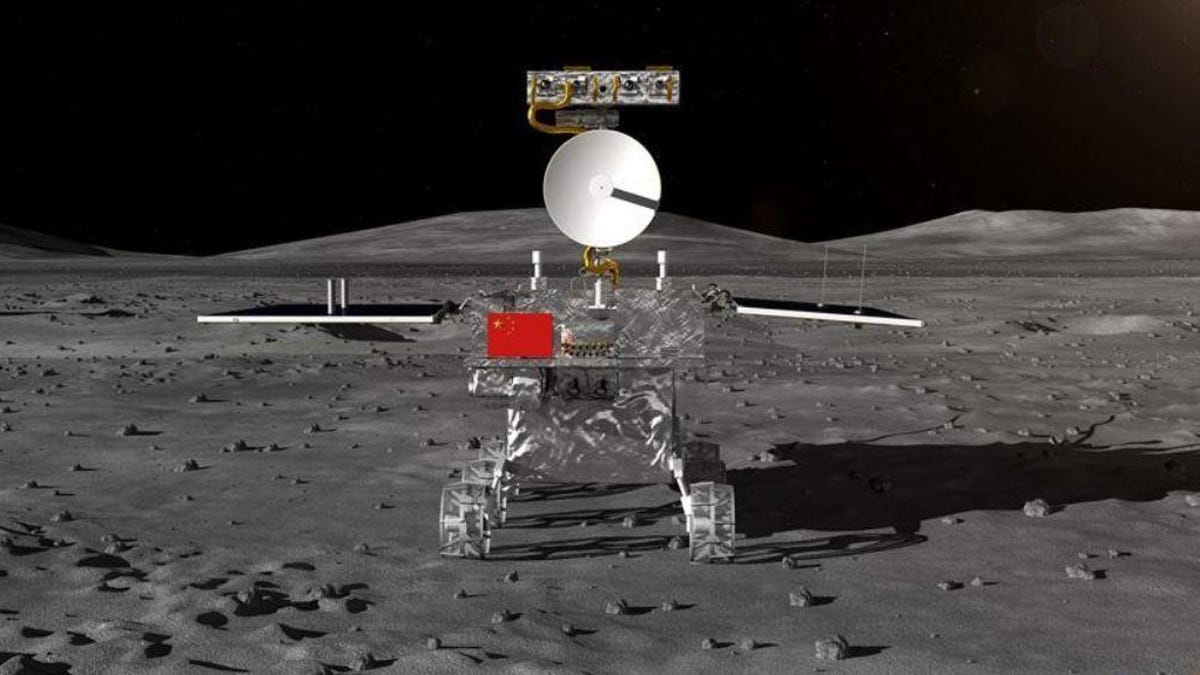China will take historic road trip to the far side of the moon
The Chinese space agency has been relatively mum about its plans, but indications are the Chang'e-4 lander and its rover are ready to launch.

The yet-to-be-named rover China is sending to the far side of the moon.
China is ready to go where no one has gone before. It's launching the Chang'e-4 lunar lander Friday on a mission to explore the side of the moon that never shows itself to us here on Earth.
The Chinese government at a press conference in August gave the public a look at the rover Chang'e-4 will be carrying to the moon's surface.
There's been little news out of China on the mission since then and it's not clear whether the launch will be televised anywhere. Chinese state media outlet Xinhua said in August that the public would be able to choose the name for the rover, but the moniker hasn't been revealed yet.
Sources including journalist Andrew Jones, who covers China's space program, report that the launch is currently set for around 1:20 p.m. ET Friday from the Xichang Satellite Launch Center in southwest China using a Long March 3B rocket.
5 years ago China launched the Chang'e-3 lander & rover to make the 1st lunar soft-landing since 1976. On Friday (~18:30 UTC/14:30 ET/02:30 local Saturday) Chang'e-4 will be launched to make the 1st attempt at a landing on the far side of the Moon. It'll look a lot like this: pic.twitter.com/FijgpgX6vJ
— Andrew Jones (@AJ_FI) December 3, 2018
The rover is actually the original backup to China's Jade Rabbit rover that landed on the moon in 2013; it has since been repurposed for this more ambitious mission. The vehicle will carry a panoramic camera, infrared imaging spectrometer and radar devices to study the lunar surface, soil and structures around its landing point near the moon's south pole.
Chang'e-4's target landing spot was described in a research report led by scientists from the China University of Geosciences and published earlier this year. The goal is to land on the floor of the Von Karman Crater, a particularly deep lunar crater.
"The Von Karman crater is an ancient, complex impact crater," Long Xiao, one of the report's authors, wrote in the magazine of the Planetary Society. "Its depth and gravity measurements suggest that the huge impact may have exposed the moon's mantle."
The hope is that scientists may be able to study those upper-mantle materials, as well as the smaller rocks and dust that make up the surface.
Believe it or not, the far side of the moon is also something of a coveted spot for astronomers who have talked for decades of building observatories on the lunar backside, far away from the bothersome interference of Earth's atmosphere. That's why, in addition to the instruments on the rover, the lander itself has its own scientific instruments, including a low-frequency spectrometer that could carry out pioneering low-frequency radio observations of deep space.
The Chang'e-4 lander, which will carry a rover to the moon's far side
Other instruments will study the interaction between the moon and the solar wind and keep a digital eye out for possible water.
One reason no attempt has ever been made to visit the distant side of the moon is that the lack of a line of sight makes direct communications with a spacecraft difficult. China's space agency aims to solve this using a relay satellite that was launched earlier this year and now sits ready to act as a cosmic operator connecting Earth and the far side via its perch at the second Lagrange point beyond the moon's orbit.
There's been no official word on when landing on the moon will take place, but Jones reports it could be Jan. 3. If we learn of anywhere that'll be airing the launch and/or landing, we'll be sure to share the details.
Meanwhile, dust off that old vinyl copy of Pink Floyd's Dark Side of the Moon (or just stream it) and get ready as the moon becomes the hot new destination for 2019 and beyond.
NASA turns 60: The space agency has taken humanity farther than anyone else, and it has plans to go further.
CNET's Holiday Gift Guide: The place to find the best tech gifts for 2018.

